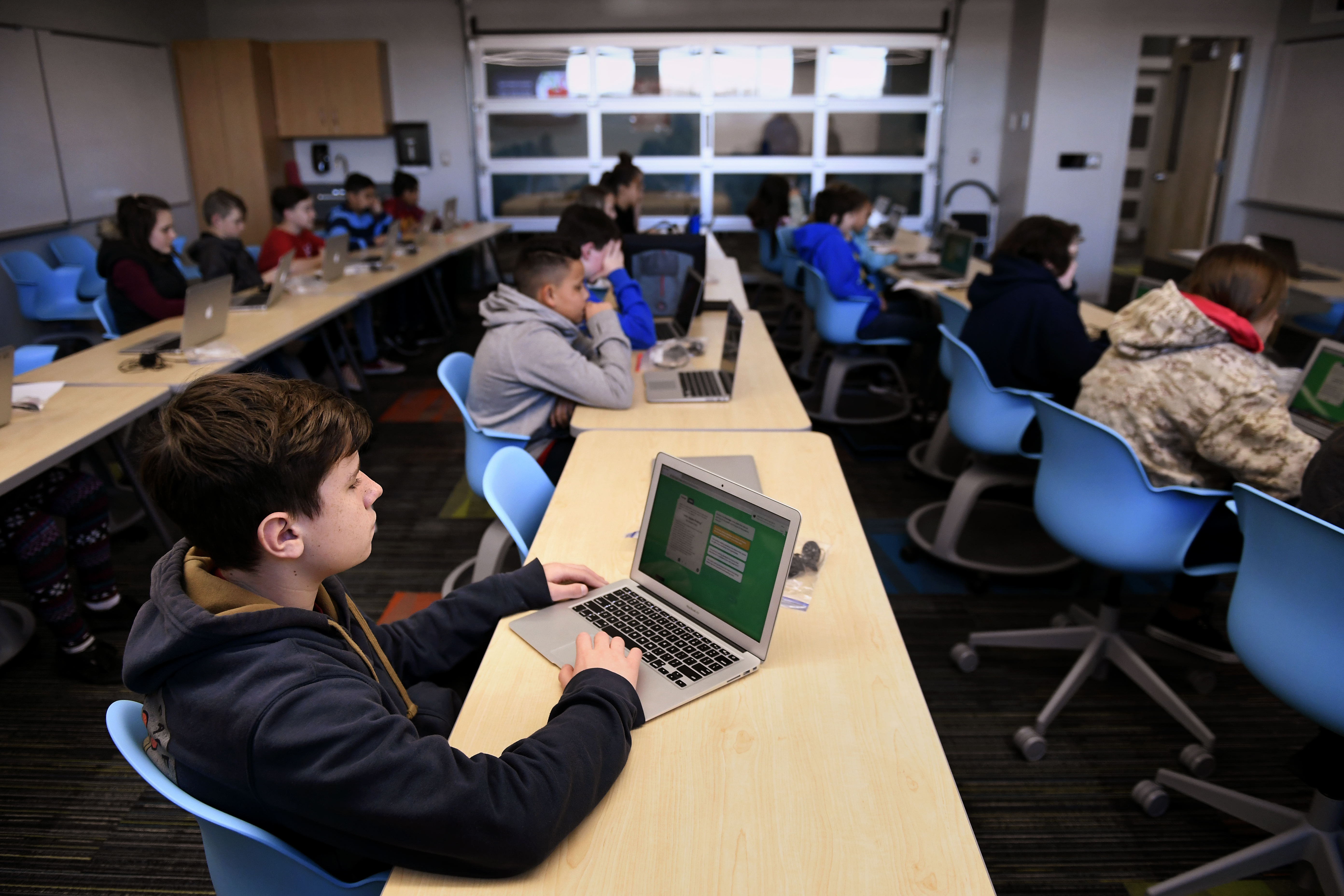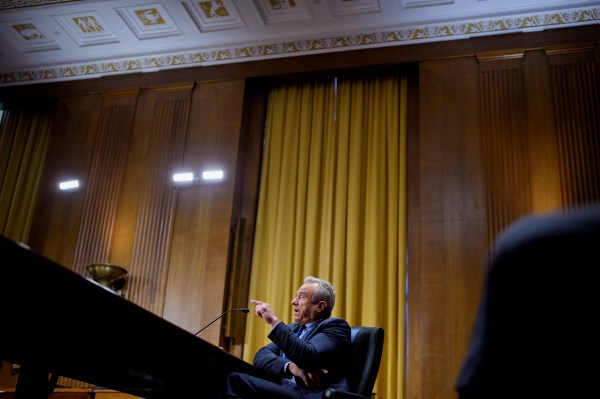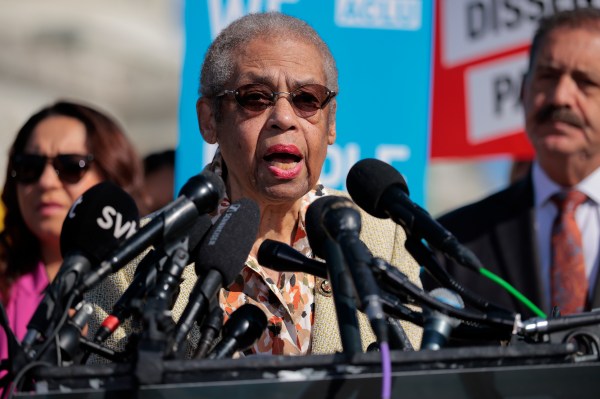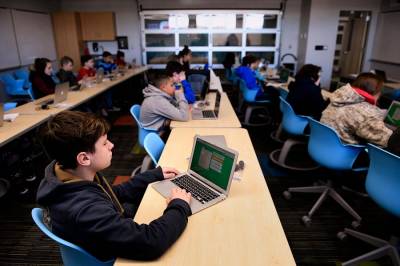Welcome to the latest in our series, “The Biden Agenda.” We've invited some of the smartest thinkers and subject-matter experts we know to contribute to what will become an occasional series on what a Biden presidency might look like. Andy Smarick, a former president of the Maryland State Board of Education and a former deputy assistant secretary at the U.S. Department of Education who is now a senior fellow at the Manhattan Institute and member of the Maryland Higher Education Commission, previews how the Biden administration might handle K-12 education.

There was a time when contentious policy matters were primarily left to states and localities to sort out. Then, if something had to rise to the national level, Congress would play the lead role. Today, we seem to largely dispense with decentralization and deliberative democracy, and major decisions are simply made by executive branch agencies. This has a way of making our politics even more toxic, as citizens have less and less ability to drive policy on the highest-profile and most important matters.
Take K-12 education for example. It was once foremost among those matters left to small, local democratic bodies (school boards) and state governments, our “laboratories of democracy.” We didn’t even have a U.S. Department of Education until 1979. Since then the federal government—especially the executive branch—has taken on an ever larger role in education.
To understand how a President Biden would approach K-12 education we can start by simply studying the campaign’s promises and looking back at how the Obama administration advanced its schools agenda.
Biden would aim to spend a whole lot of money on initiatives that have been prioritized by the left for years, like higher funding levels for low-income students and those with special needs, increased teacher salaries, and initiatives to expand various services in schools and early-childhood offerings. So based on the campaign’s official statements, we should anticipate—if a President Biden is accompanied by Democratic majorities in both houses of Congress—a significantly bigger budget for the U.S. Department of Education and an Uncle Sam who’s moderately more active in America’s K-12 schools.
In truth, this sounds like standard educational fare for Democratic aspirants to the White House. Indeed, since Vice President Biden has carefully cast himself during the campaign as a transitional figure with conventional politics and an even disposition, you might expect his administration to chart a familiar course.
But recent history encourages us to be wary. During the Obama administration, the most prominent—and polarizing—federal education initiatives were the result of unexpected, brash choices made by executive branch officials. Using questionable authority, these administrators advanced immoderate policies that frequently roiled education’s waters. The impetus for these initiatives was not clear, directive statutory language or a national consensus on key issues. It was the preferences, often the presumptuousness, of those in important positions.
Many of today’s Democratic party activists are considerably to the left of Biden. Many have been energized, some even radicalized, by recent events as well as by President Trump’s behavior. Moreover, during the last decade, the once bipartisan “education reform movement” took a sharp left turn. The point is: As a President Biden selects individuals to lead and staff the U.S. Department of Education and work on education issues in the White House, he will be choosing from among a pool of candidates predominantly focused on major change and habituated to the idea of expansive executive branch authority.
If Biden prevails on November 3, we should carefully watch who is chosen for his transition team and senior administration roles. When it comes to K-12 education over the next four years, personnel will absolutely be policy.
The Stated Agenda
The official Biden-Harris website outlines an unquestionably progressive agenda for K-12 schooling. More money is its beating heart.
They want to triple funding for Title I, the federal government’s primary stream of dollars for low-income students and schools (from about $16 billion to $48 billion). They also promise to increase, by billions, federal funding for students with disabilities. They want higher teacher pay, assistance for educators to pay off student loans, and expanded career paths so teachers can earn more for additional responsibilities.
Biden also wants to double the number of school-level health professionals like psychologists, guidance counselors, and social workers. He wants more federal funding for school facilities and career-and-technical education programs and an increase in the number of “community schools” (up from approximately 5,000), which generally use a variety of local, state, federal, and private funding streams to add an array of social services on top of schools’ instructional duties.
Perhaps the biggest-ticket, and most headline-grabbing, item would be universal pre-K (the campaign says Biden will “work with states” to bring this about). Were Congress to authorize and fund such an audacious undertaking, early-childhood education would end up as a new foothold for Uncle Sam’s ambitions in public schooling. Expanded pre-K would also serve as the keystone of what seems to be a larger project to have the federal government more energetically engage with infants and toddlers. The campaign wants to ensure that every community health center has an early childhood development expert, and it aims to double funding for “home visits,” through which experts help with the early stages of parenting.
On the Covid front, the campaign also leads with the pocketbook. Although Biden wants state and local leaders to make decisions about how and when to open schools (with CDC guidance), he advocates federal funding to save jobs threatened by state budget shortfalls as well as for technology upgrades, protective equipment, sanitation products, health services, and building alterations. He would also charge his administration with helping schools deliver high-quality online instruction and address the learning gaps caused by the pandemic.
Perhaps a Democratic-controlled Congress would bankroll all of these projects, especially if they are part of a short-term post-election stimulus package. But given our giant annual deficits, colossal debt, and upcoming loss of federal revenue due to the economic slowdown, new, ongoing federal education funding will be hard to come by. Although the campaign mentions some lower-dollar initiatives (like reinstating Obama-era rules on school desegregation and somewhat vague plans to increase teacher diversity and support the creation of new high schools in disadvantaged areas), it’s not so clear what education efforts would occupy a Biden administration’s time in a low-spending environment or if Republicans keep control of the U.S. Senate and thwart mammoth new spending plans.
This is why the Obama administration’s executive-branch activism and changes in left-of-center policy circles become so instructive. It’s also why we should pay attention to the language and recommendations of the Biden-Sanders “unity” report.
Education and the Administrative State
The Obama administration advanced much of its agenda outside of the traditional legislative process by using a number of agency tactics, including guidance documents like “Dear Colleague” letters, that can explain new agency interpretations of statutes, new enforcement mechanisms, and more. For example, the administration issued federal policies on the use of school bathrooms, altered student-discipline policies and practices, and overhauled the procedures for adjudicating campus sexual harassment and assault charges. It filed a federal lawsuit in an attempt to block Louisiana’s school voucher program. When Congress didn’t reauthorize the No Child Left Behind Act (NCLB) on schedule, the administration decided to offer waivers from the law’s provisions if states adopted policies the administration liked. The policies in the multibillion dollar “Race to the Top” program were only vaguely described by Congress; administration officials, through the Federal Register, advanced “largescale, system-changing reforms” via dozens of criteria and sub-criteria crafted by administration officials. For instance, in section (D)(2) alone, a state had to explain to federal reviewers how it would assess a student’s annual academic growth; implement educator evaluation systems utilizing student growth and multiple rating categories; offer timely and constructive feedback to teachers and principals; and explain how evaluation determinations influenced educator development, compensation, promotion, tenure, certification, and dismissal decisions.
Congress ended up so frustrated by the administration’s unilateral activity that it passed, in its eventual reauthorization of NCLB, a sweeping set of prohibitions on the department’s ability to create administrative rules and issue guidance letters under the Elementary and Secondary Education Act.
For some sense of what an activist Biden administrative state might do, we can look to the
Biden-Sanders Unity Task Force. Some of its language on education was imported directly into the official Democratic platform. The task force’s recommendations are similar to the Biden campaign’s positions on teacher salaries, early childhood education, childcare, Title I and special education funding, community schools, and school-based health services.
But the task force took a number of further-left positions. It wants to eliminate high-stakes standardized tests that “unfairly label students” (such tests are at the heart of school accountability systems). Task force members want early childhood educators to be able to unionize and collectively bargain; they also want federal legislation guaranteeing the right of public-sector employees in all states to unionize and collectively bargain. They advocate for schools to offer universal free meals and open food pantries. They want to reinstate some Obama-era rules that Secretary Betsy DeVos rescinded.
And unlike the Biden campaign, the task force offered a host of recommendations that would undermine school choice. Regarding charter schools, members want more reporting requirements and new governance rules. They want the federal government to be able to deny funding to charters when school districts deem them problematic. And, of course, they want to defund the voucher program for students in Washington, D.C.
We should expect some members of this task force (as well as others from the organizations they represent) to serve on Biden’s transition team and then in a Biden administration. We also need to appreciate how far left the education reform movement moved in recent years after once being the professional home of conservatives, moderates, and progressives alike. A few writers have been pointing to this trend for sometime. But proof came from a staggering 2019 study by Frederick M. Hess and Jay P. Greene quantifying the “progressive capture of education reform.” Looking at campaign contributions of the staff of key organizations, they found, as they wrote in the Wall Street Journal, “The deep-blue hue of education reformers rivals that of famously Democratic precincts like Hollywood and public-employee unions.”
Those in politically homogeneous groups can tend toward more extreme views because they don’t engage with, much less understand, the principles and positions of those with whom they disagree. If Biden staffs up his education team by pulling from the task force and the school-reform movement, we should watch carefully to see if these officials mirror the moderation and judiciousness he’s campaigning on.
Prudent or Polarizing Personnel
It is possible that a President Biden will tell his transition team to find education staff who are moderate in politics and temperament and who believe in the modest use of administrative power. In that case, we could expect the agenda outlined by his campaign to be pursued through legislative proposals and budget requests and then adjudicated by Congress. After negotiations and compromises, the upshot would be federal education policy’s incremental shift to the left.
But I’m skeptical. I suspect, instead, we’ll see a good number of activists eager to use whatever authority they can find to advance a progressive agenda. The nation is too polarized, the left’s political and policy apparatus is too energized, and the precedents for bureaucratic boldness are too many for us to bet on humility and moderation. Recall that the Obama administration, knowing states were desperate for money in 2009-2010 because of the Great Recession, used the lure of Race to the Top money to get states to adopt a host of its policy preferences. If there’s a Biden stimulus package, don’t be surprised if enterprising administration staff try to make education funds contingent on states’ adoption of their policy preferences. Even if such legislation isn’t in the offing for early 2021, we might still expect Dear Colleague letters, guidance documents, and federal register notices related to unionization, assessments, charter schools, private-school choice, discipline, school culture, school composition, single-sex schools and sports, and other issues that unexpectedly emerge.
If this comes to pass, the right will need to rely on the judiciary to hold the line on administrative limitations. Sadly, congressional Republicans will be rhetorically defenseless due to their acquiescence to President Trump’s executive branch adventuring. As worrisome, under this scenario, K-12 schooling would continue to be among the most radioactive domestic-policy domains. Distant federal officials would make uniform decisions that are ill-fitting and frustrating for many places while important issues are litigated in courts and on cable news instead of in America’s legislatures. The battle over Common Core could look tame by comparison.
Based on Biden’s campaign documents, conservatives are unlikely to be enthused about his agenda regardless of who he chooses as secretary of education and for other key spots. Big federal spending increases and new federal programs are unlikely to generate much support on the right. But it would make a meaningful difference to our politics and policy if Biden prioritized experience and judiciousness over fervor.
Ideally, his education team would have seasoned policy practitioners aware that the nation’s diversity produces different views about what makes for good schools. They would appreciate why America has more than 13,000 school districts; why millions of parents choose a vast array of charter schools, private schools, micro-schools, and homeschools; and why education politics grow toxic when Uncle Sam tells everyone what to do. That means trusting pluralism, democratic deliberation, and decentralization over technocracy and certain, unbending applications of extreme renderings of social justice.
If Biden truly does want to control the raging fire in our public square, he can start by recognizing that federal education policy need not fan the flames.
Previous articles from “The Biden Agenda”:
Photograph by Joe Amon/Denver Post/Getty Images.







Please note that we at The Dispatch hold ourselves, our work, and our commenters to a higher standard than other places on the internet. We welcome comments that foster genuine debate or discussion—including comments critical of us or our work—but responses that include ad hominem attacks on fellow Dispatch members or are intended to stoke fear and anger may be moderated.
With your membership, you only have the ability to comment on The Morning Dispatch articles. Consider upgrading to join the conversation everywhere.